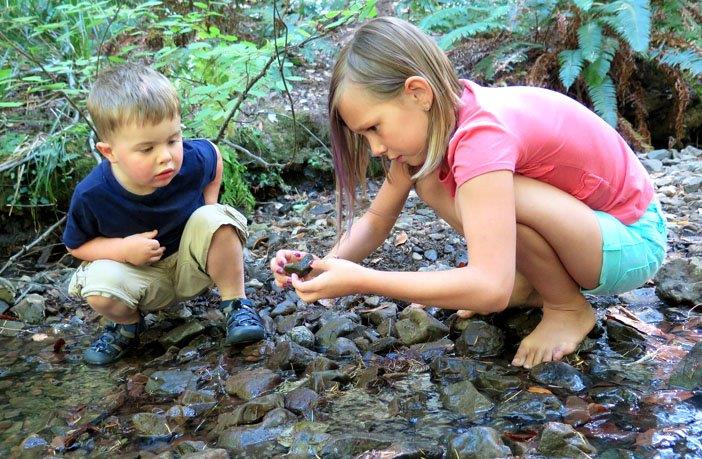Richard Louv mentioned in his book “Last Child in the Woods”, a few years ago that children had “nature deficit disorder” because they spent so little time in nature. They endured severe repercussions, including increased stress and anxiety, increased obesity and ADHD rates, etc.
Many parents are probably aware that getting their children outside in nature is beneficial to their health. However, they may see a trade off: encouraging their children to get outside implies less time studying. And, surely, less studying time equals less academic success?
Wrong. Surprisingly, it appears that the reverse is true. As this field of study has progressed, we’ve discovered that being in nature benefits children’s health and their ability to learn. Even little doses of nature can have a significant impact.
Nature certainly benefits children’s psychological and physical well-being, influencing their learning. However, it appears to have an impact on how they pay attention and participate in class and how well they get along with teachers and peers. Let’s see how it helps improving the learning process in young children:
- Nature relieves stress in children- Children, like adults, are less stressed when they have green spaces to withdraw to on occasion, which aids their resilience. Compared to kids who solely get instruction indoors, studies have revealed that taking a class outside one day a week can considerably enhance children’s daily cortisol levels, indicating less stress and better stress adaptation. In addition, children in rural areas who had more nature around healed better from stressful life events in terms of self-worth and distress.
- Children’s attention is restored by nature- Although attention is necessary for learning, many children struggle to pay attention in the classroom due to distractions, mental weariness, or ADHD. Fortunately, spending time in nature—whether it’s a walk in the park or viewing nature out the window—can help kids regain their focus and perform better on cognitive tests.
- Development of self-discipline in children – Many children, especially those with ADHD, struggle with impulse control, which can interfere with schoolwork. Green space near children’s homes encourages them to be more self-disciplined and concentrate better—especially girls. Additionally, parents of ADHD children indicate that having their children participate in outdoor activities rather than indoor activities decreases their ADHD symptoms. It’s no surprise that self-discipline and impulse control are linked to academic performance.
- Physical fitness is improved by spending time outdoors- While there are numerous reasons why physical fitness is vital for children, one that may not immediately come to mind is its role in learning. Cardiorespiratory fitness, in particular, appears to enhance effective cognitive processing, and children who are physically fit perform better academically. Though it is unclear if nature directly impacts physical fitness, the more time children spend in nature, the higher their cardio-respiratory fitness. Having access to nature may inspire youngsters to be more physically active as they grow older and stay in shape longer.
- Students are more engaged and interested when they are taught outside- Outdoor classes appear to be popular with children. Unfortunately, many teachers are hesitant to take their students outside to learn because they think they would be “bouncing off the walls” and less engaged in the following (indoor) lesson. Fortunately, research suggests that children are more engaged in learning during outdoor lessons and when they return to their classroom—even if the subject they are studying is not related to nature.
- Nature encourages social interaction and creativity- Children’s learning environments, both social and physical, might influence their academic progress. Allowing children to spend time in natural surroundings or providing controlled nature experiences can help create a more tranquil, socially comfortable, and enjoyable learning environment. Being outside can help improve peer-to-peer and student-teacher connections, which are important for learning, even for socially excluded kids.
Some claim that nature supplies many “loose parts”—sticks, stones, and mud—that inspire pretend play, exploration, creativity, and problem-solving. Children’s play becomes noticeably more imaginative, physically active, and social when loose pieces are present, according to observations by teachers and principals.
We must do more to bring this valuable resource into our classrooms. Trees and green areas should be kept in and near schoolyards by architects and city planners. Also, instructors and principals should take lessons outside and use recess to refresh kids’ minds before the next session, not as a reward for good behaviour.
We will not simply help our children’s psychological well-being by doing so—though that is reason enough! We will almost certainly assist them in improving their academic performance. We may also be encouraging future stewards of our natural world since a connection to nature fosters better concern for nature.
Humans evolved to grow and thrive in natural settings, and studies reveal that indoor childhoods are costly. It’s time to cure our children’s “nature deficiency disorder” by prioritizing “nature time” over academics and extracurricular activities.

